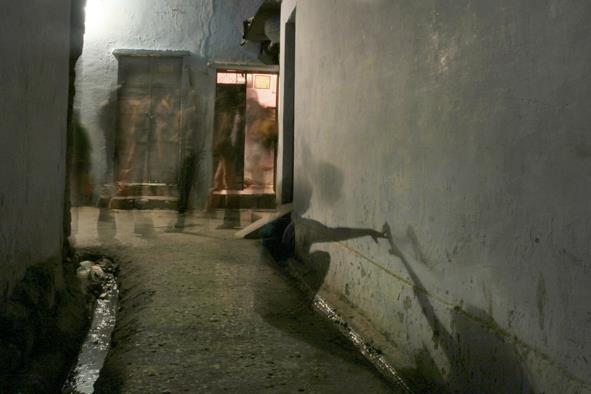UNDER THE VOLCANO by Indra Sinha
Indra Sinha, author of “Animal’s People” tells the story of local journalist, Raj Keswani, who has the dubious honour of being the man that loudly predicted the Bhopal Gas Disaster and found himself not being listened to.
The second part of the story describes the horror of ‘That Night’…
II. ‘THAT NIGHT’
DECEMBER 3 1984, just after midnight. Death came out of a clear sky. From Union Carbide’s factory a thin plume of white vapour began streaming from a high structure. Caught by the wind, it became a haze and blew downward to mingle with smokes coming from somewhere nearer ground. A dense fog formed. Nudged by the wind, it rolled across the road and into the alleys on the other side. Here houses were packed close, shoddily-built, with ill-fitting doors and windows. Those within woke coughing, their eyes and mouths on fire. Across the city countless women’s voices were saying, ‘Hush darling, it’s only someone burning chillies. Go back to sleep.’
Survivors’ leader Champa Devi Shukla remembers, ‘We woke with eyes crying, noses watering. The pain was unbearable. We were writhing, coughing and slobbering froth. People just got up and ran in whatever clothes they were wearing. Some were in their underclothes others wore nothing at all. It was complete panic. Among the crowd of people, dogs, and even cows were running and trying to save their lives and crushing people as they ran. All climbed and scrambled over each other to save their lives.’
In the stampedes through narrow alleys many were trampled to death. Some went into convulsions and dropped dead. Most, struggling to breathe as the gas ripped their lungs apart, drowned in their own body fluids. Aziza Sultan had two young children and was pregnant with her third. When the panic began, her entire family ran out of their house. They were in night clothes and it was bitterly cold, but nothing mattered except to run.
Outside in the lane, it appeared that a large number of people had passed that way. Shoes, slippers and shawls were strewn about. A thick gas cloud enveloped everything, reducing the streetlights to brown pin-points. ‘In the panic,’ Aziza recalls, ‘lots and lots of people were running, screaming for help, vomiting, falling down unconscious. Children were wrenched from their parents’ grasp. Their cries were heartbreaking. I was terrified of losing my children. I was carrying my baby son Mohsin. My daughter Ruby was holding on to my kurta, she did not once let go. We had gone about 500 meters when my father-in law spotted a truck and told us to climb aboard. We couldn’t, but he was tall and strong so he got in. In the confusion instead of lifting up his grandson, he grabbed another little boy who was running around on his own. My mother-in-law was vomiting. She was a heart patient and Hamidia hospital was still two kilometers away, much of it uphill. By the time we came to the Bhopal Talkies crossing Mohsin was being sick on me. Ruby was also vomiting. We all fell on the ground. I had a miscarriage right there in the middle of the street, my body was covered with blood. There was blood all over me. I couldn’t control my bowels and the faeces ran down my legs, mixing with the blood.’ At least eight thousand people died on ‘that night’. Half a million were injured. In the years since, as more people died of their injuries, and illnesses caused by inhaling the gas, the death toll has risen above twenty thousand. The long-predicted gas leak at Union Carbide was and remains the worst industrial disaster in history.
You can read the complete Bhopal Marathon publication online here



